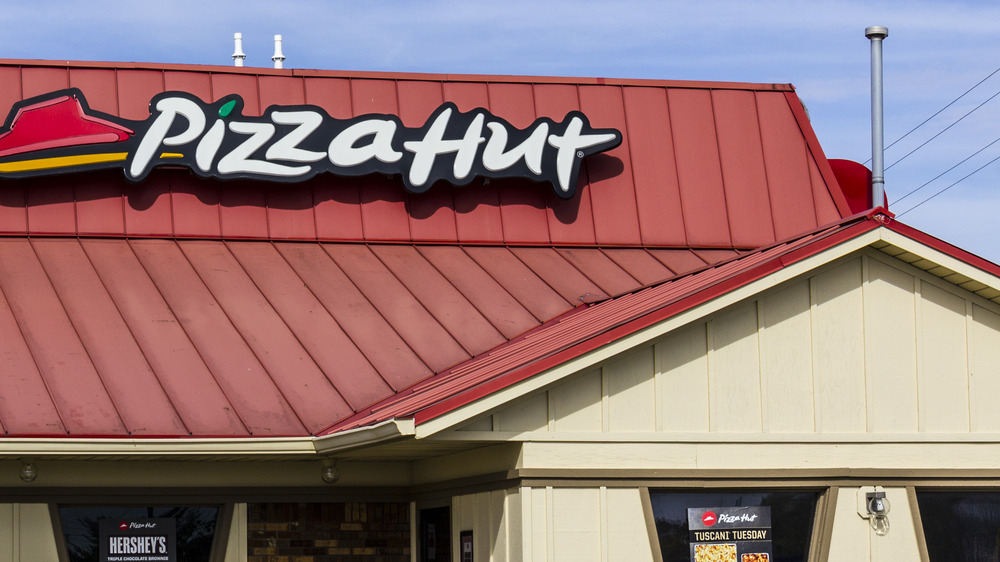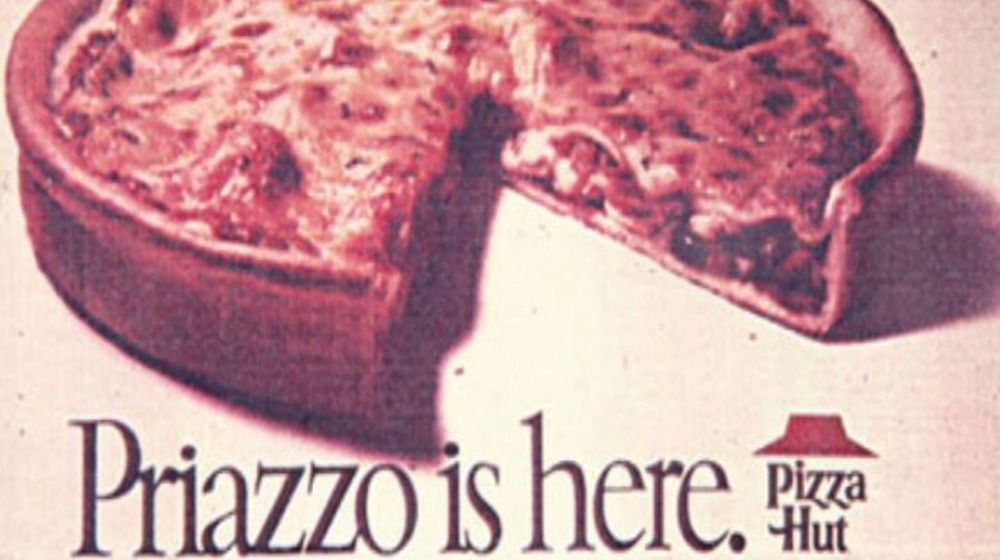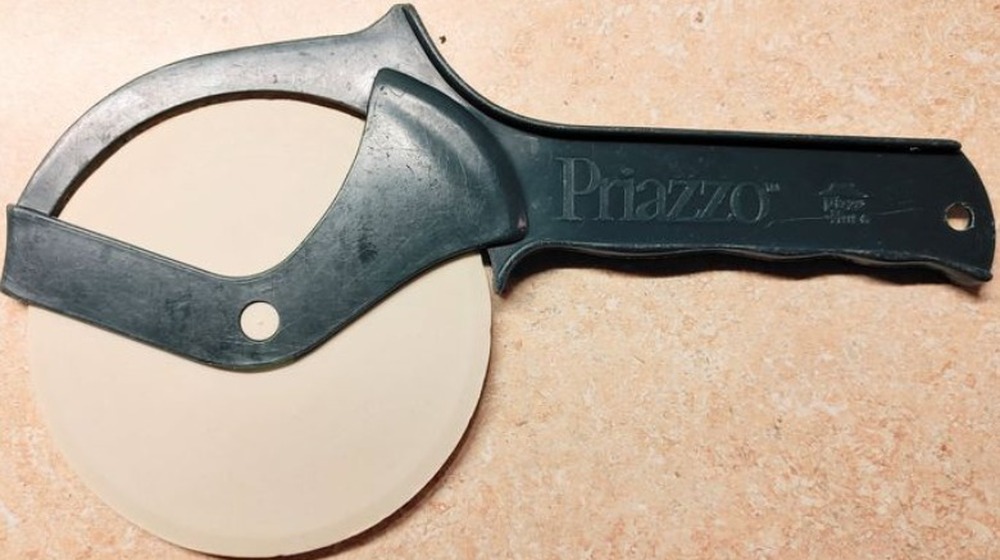The Real Reason People Stopped Buying Pizza Hut's Priazzo
In 1985, The Chicago Tribune reported that Pizza Hut dished out 15 million dollars (over $36 million today, according to Inflation Calculator) on TV ads to market its newest invention: not a pizza, a priazzo. In Oklahoma City, the first customers to sample the pies listened to Italian opera and were told that the invention was inspired by foods served to nobility in ancient Rome (via The Oklahoman). In Council Grove, Kansas, Pizza Hut gave away a ten-speed bicycle to commemorate the new dish (via Council Grove Republican). The name, "priazzo," was another $61,000 to $110,000 expenditure in today's dollars (via UPI). It was the brainchild not of a person, but of a computer told to generate names starting with "p" and containing a double z (via Time). At first, the investment paid off.
The Priazzo, today, has a cult following that feels similar to the way fans remember Gremlins. One, nostalgic customer described it as "a magical bread bowl of tomato sauce, cheese, and meat" (via Hot 104.7). The pizza chain took two years to develop the deep-dish pizza-like food, finally settling on stuffing ingredients between a bottom and a top crust, and then smothering everything with sauce, to produce 1 1/4 inch thick pies (via The Chicago Tribune). If you choose to believe a wistful former manager, the dough (heavy in oil and cornmeal), the sauce (thick and lasagna-like), and the cheese blend (including, but not limited to mozzarella and cheddar) were all unique to the product (via Pizza Making). The Priazzo even required a special pan.
The Priazzo still has a cult following
Pizza Hut, per Restaurants & Institutions, made 350 million dollars off of the Priazzo in its first year, contributing, says UPI, to earning increases that hit two-year highs. It came in three, meat-heavy varieties: Roma (with Italian sausage, beef, pork, and pepperoni), Florentine (with ham), Milano (with bacon, pepperoni, Italian sausage, beef, and pork), and one vegetarian-friendly, cheese-and-tomato dominated variety, the Napoli (via The Oklahoman).
Anecdotally, former customers tell stories on Reddit about how the Priazzo was so popular that during all-you-can-eat lunch buffets, "You'd have to stalk the employees ... to even stand a chance of getting a slice." On a Facebook group dedicated to the Priazzo, fans eulogize the dish with a fervor that must make every single one of the chain's modern menu offerings insanely jealous. "We got priazzo once a month, my favorite day of the month," one group member remembered (via Facebook). Another wrote that the Priazzo was something of a matchmaker to her and her husband, who ate it on their first, fire-side date. A third posted a picture of a plastic pizza cutter that Pizza Hut once gifted with the purchase of a Priazzo, proudly declaring, "Still have it and still use it!"
Every once in a while, after a forlorn Priazzo-lover begs for its return on Twitter, Pizza Hut promises to look into it. But the Priazzo, as per Mental Floss, disappeared sometime between 1991 and 1993. As much as we loved it, it might be time to come to terms with reality.
What went wrong with the Priazzo?
In 1987, the Priazzo was still popular. A comedian that Pizza Hut hired traveled the country in a mobile home dubbed ”Pizza Hut Mobile Institute For Pizza Studies," asking after Pizza Hut customers' favorite menu item. They'd often name the Priazzo, according to The New York Times. It seems unlikely that people would have stopped buying the Priazzo, had they been given the choice. They weren't. Pizza Hut simply gave up on selling it. Why?
CNBC says it's because the pie took too long to make. According to The Impulsive Buy, by the 90s, the Priazzo's 40-minute prep-time wasn't worth it for the chain's customers. Neither was the expensive equipment needed to make the Priazzo worth it for the chain. Eat This, Not That! insists that it's because pizza shouldn't be eaten with a fork and a knife. The Priazzo had to be. On Reddit, some Pizza Hut employees hint at a fourth, possible reason for the popular dish's demise. Pizza Hut's new ovens may not be powerful enough to cook the pies efficiently.
Maybe, too, Pizza Hut just needed to make space for other experiments. Take, for example, stuffed-crust pizza: a pizza that wasn't marketed as uniquely Italian like the Priazzo was, but instead quintessentially U.S. American. Donald Trump and his former wife, Ivana, introduced it to the world in a raunchy, 1995 advertisement in which they controversially eat the pizza's crust first (via Youtube). "It's wrong, isn't it?" Trump asks Ivana in the commercial. "But it feels so right," Ivana replies.


